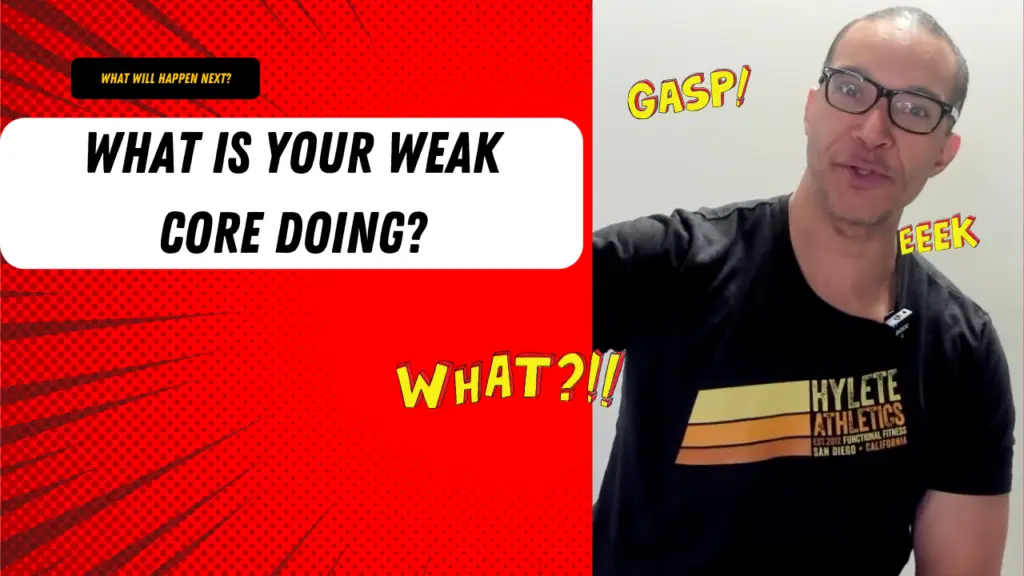
Weakness in your core is about much more than just missing “six-pack” abs. It’s the foundation of how your body functions daily impacting pain, injury risk, posture, digestion, and energy. Here’s how a truly weak core reveals itself, how these problems are connected, and what to do about it.
What Actually Is the Core And Why Does It Matter?
Your true core is a wide, complex system: four layers of abdominals, three layers of spinal erectors, the diaphragm, pelvic floor, intercostals, lats, pecs, and even parts of your glutes and hip flexors. These muscles are surrounded and integrated by robust fascia, forming your body’s “corset” for stability, movement, and organ support.
A strong core anchors your upper and lower body—power ripples out through it whether you’re running, lifting, cleaning, or simply standing and turning. When your core is weak, force doesn’t distribute through your system and ends up causing strain, injury, or dysfunction elsewhere.
1. Back Pain and Why You Can’t Fix It from the Outside
Back pain is the most classic sign of a weak or deconditioned core. Your abdominal muscles (especially the deep TVA) and the layers of back extensors are responsible for keeping the natural spinal curves and providing “active stability” to every vertebra. When the core can’t do this job, small muscles and ligaments are overloaded, discs degenerate, and pain is inevitable.
Chronic sitting, stress, and dehydration make this even worse: the discs between the vertebrae need water and dynamic core support to stay “fluffy” and absorb shock. If your core coordination is off, those discs flatten, allow unnatural movement, and eventually trigger pain—no matter how often you stretch or see a chiropractor.
2. Herniations Spinal and Visceral
Core weakness doesn’t just set you up for spinal disc herniations. If there’s a literal or functional “hole” (from weak, stretched, or deconditioned tissues), your thoracic and abdominal organs can shift and even herniate out of their natural compartments. Classic examples include weak points in the abdominal wall (inguinal or umbilical hernias) and “internal” herniations, where organs slip through diaphragmatic or pelvic floor defects.
Pascal’s Law—the principle that pressure applied to a fluid spreads equally in every direction—applies here. When your core can’t “hold pressure,” force escapes through the path of least resistance, causing pain, tissue strain, or an actual bulge. Keeping the abdominal wall strong, coordinated, and flexible gives you a true “wall,” not a revolving door.
3. Visceral and Digestive Problems
The core is also your body’s anchor for digestive health and internal motility. Weakness or loss of tension in the deeper tissues—especially the diaphragm and abdominal wall—reduces both the stability and movement of your organs, affecting drainage, blood flow, and bowel motility. That can mean sluggish digestion, bloating, or a feeling of heaviness that no medication seems to fix.
If your core is “loose,” your organs aren’t supported and can’t do their job. When you retrain the diaphragm, address core strength and posture, and restore balance, digestion and energy improve.
4. Fatigue, Poor Balance, and Posture Problems
Your core is at the center of every movement supporting your skeleton and acting as the communication hub for balance, agility, and force transfer. If it’s weak, bigger, less efficient muscle groups work overtime just to maintain basic positions (like standing, sitting, or picking something up), resulting in rapid fatigue and muscle aches.
Poor core strength also contributes directly to slouching, “tech neck,” and postural collapse. Good alignment spreads workloads efficiently, while slouched or tilted posture focuses them in harmful areas—creating a vicious cycle of pain and tiredness.
Building Your Core The Right Way
Start from the deepest muscles—train your TVA, diaphragm, and multifidi for internal control before progressing to external movers like obliques and erectors. Exercises that integrate breathing, maintain alignment, and combine both strength and flexibility give you durable protection and performance. Segmental strength work, myofascial stretching, and consistent attention to hydration and posture are cornerstones for rebuilding a core that lasts.
[Segmental Muscle Strengthening]
If chronic pain, fatigue, or internal issues are holding you back, don’t just “work out” address your foundation. For a completely customized approach, book a diagnostic consult or download our expert core-strength guide below.
it’s not just working out, it’s building a foundation for a better life.
Find out more @

Leave a Reply